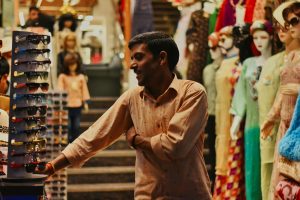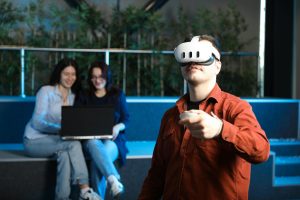How Visual Merchandising Directly Impacts Shoppers’ Spending Habits
When it comes to attracting shoppers and driving sales, visual merchandising is a vital element in any retail strategy. Not only is it the art of presenting products in an appealing way, but it also plays a crucial role in effectively communicating with customers. From eye-catching window displays to well-organized product placements, visual merchandising can directly impact shoppers’ spending habits. In this article, we will delve into how visual merchandising influences shoppers’ behavior and how businesses can leverage this strategy to boost their bottom line.
The Psychology Behind Visual Merchandising
Before we dive into the ways visual merchandising affects shoppers’ spending habits, it is important to understand the psychology behind it. Humans are visual creatures, and our brains process images much faster than words. In fact, studies have shown that 90% of the information transmitted to our brain is visual. This means that visual merchandising has the power to grab customers’ attention and make a lasting impression in a short amount of time.
The Importance of First Impressions
When it comes to shopping, first impressions are everything. In a split second, customers make a judgment about a store based on its appearance, and this includes the visual displays. A visually appealing display can pique a customer’s interest and entice them to enter the store, while a dull or cluttered display could turn them away.
Additionally, the exterior and interior of a store set the expectations for the shopping experience. When customers are greeted with an attractive window display, clean and well-lit space, and well-organized products, they are more likely to have a positive perception of the store and its offerings. This positive perception can directly translate into their willingness to spend money.
The Power of Visual Storytelling
Visual merchandising is not just about making things look pretty. It is also about telling a story. Through strategic displays, retailers can create a narrative that speaks to their target audience and influences their buying decisions. For example, a lifestyle brand could create a display that showcases their products being used in a specific setting, such as a beach vacation. This visual storytelling can evoke emotions and desires in customers, making them more likely to purchase the products to fulfill those desires.
The Impact of Color and Layout
Color and layout are essential elements in visual merchandising. Colors can evoke different emotions and can even influence buying decisions. For example, warm colors such as red and orange are known to create a sense of urgency and can drive customers to make impulsive purchases. On the other hand, cool colors like blue and green can create a calming effect, making customers more likely to spend more time in the store and make well thought-out purchases.
The layout of a store also has a significant impact on shoppers’ behavior. A well-organized and visually appealing layout can guide customers through the store and strategically lead them to specific products or areas. This can encourage customers to explore more and potentially discover products they may not have initially intended to purchase.
Maximizing Sales Through Visual Merchandising
Now that we have explored the various ways visual merchandising can influence shoppers’ spending habits, let’s dive into some tips for maximizing sales through this strategy:
Understand Your Target Audience
Effective visual merchandising starts with understanding your target audience. Different demographics have different preferences and respond differently to visual cues. By understanding your target audience’s interests, behaviors, and buying habits, you can tailor your displays to effectively appeal to them.
Keep it Fresh and Seasonal
Rotating and refreshing displays is essential to keep customers engaged and coming back. Seasonal displays that reflect the current trends and holidays can also draw in customers and create a sense of urgency to make purchases before the season ends.
Utilize Technology
Incorporating technology, such as digital displays or interactive screens, can enhance the visual appeal of displays and capture customers’ attention. This can also provide a more interactive and immersive shopping experience, further influencing their buying decisions.
Be Creative and Unique
With the rise of online shopping, brick-and-mortar stores need to provide a unique and memorable shopping experience to keep customers coming back. This means thinking outside the box and being creative with visual displays. Instead of traditional mannequins, use real people to showcase the latest fashion trends, or incorporate elements like lighting and music to create a dynamic and engaging environment.
Successful businesses understand the significant impact visual merchandising has on shoppers’ spending habits. By leveraging the psychology behind it and implementing effective strategies, retailers can not only attract customers but also influence their buying decisions and ultimately drive sales. So the next time you walk by a store window display, take a moment to appreciate the thought and strategy that went into creating it, and consider how it may have influenced your shopping behavior.










